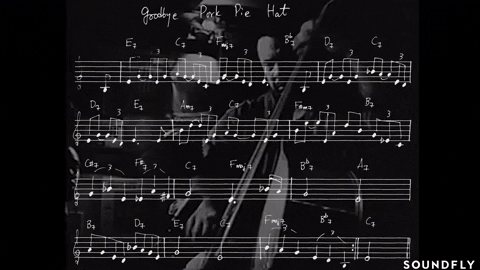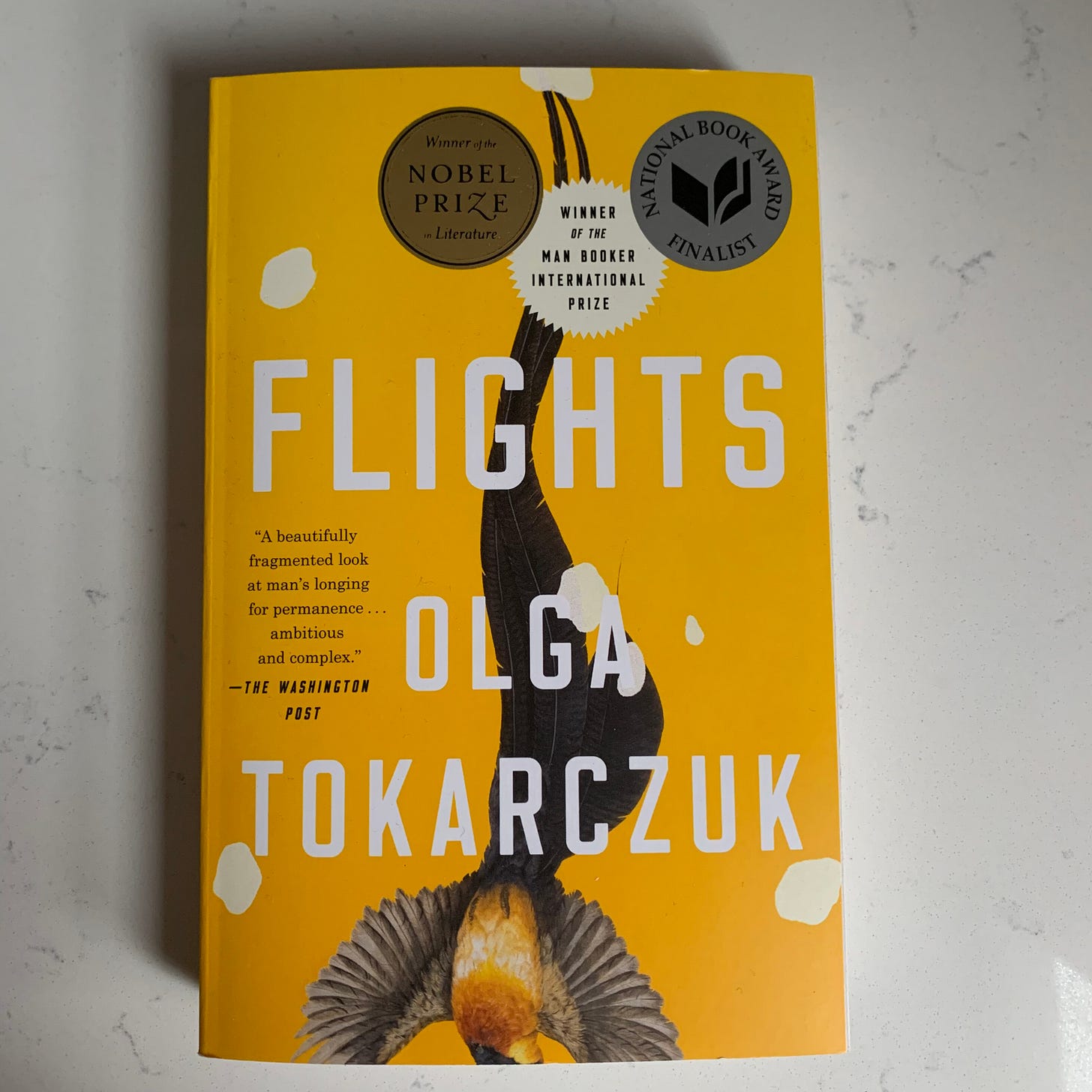'Beneath the Underdog: His World as Composed by Mingus,' by Charles Mingus
'But I've been true enough to myself to know a lie—even if I am telling it—and that's the only truth necessary.' —Review #154
An amazing thing happened! Books on GIF was included in Book Riot’s roundup ‘20+ of the Best Book Newsletters for Readers’! What a wonderful surprise! It’s thrilling to be listed among so many great newsletters like What to Read If and Book Post. I mean, Roxane Gay and Cheryl Strayed are on this list. To all our new subscribers, we’re glad you’re here and hope you enjoy Books on GIF!
I found today’s book at a Borders in my hometown years ago while looking for a gift for my dear friend Brian. I was listening to a lot of jazz at the time, and I thought this autobiography of the legendary jazz composer and bassist Charles Mingus (1922-1979) looked interesting, so I got it for him. I wanted to read it, too, and I went back and bought a copy for myself. But it sat unread on my shelves for years, until last year I decided I would finally read it. I moved it to the bedside pile, but it languished still. Then Donna and I watched ‘Pretend It’s a City’ on Netflix, and when Fran Lebowitz briefly discusses her friendship with Mingus, I took it as a sign and said:
Here’s the cover:
If you enjoy this review, click the ♥️ above or
New here?
‘Beneath the Underdog’ is unlike any autobiography I’ve ever read. It tracks Mingus’s life from his childhood in Watts to his musical pinnacle in New York, but it defies the tedious and conventional first-I-did-this-then-I-did-that format. Before the story begins, Mingus notes that names have been changed and many incidents are fictional. His story is narrated by a spectral presence, like a guardian angel or a concerned ghost, who’s watching over, protecting and judging Mingus, and it flows almost musically, mixing beauty and harsh dissonance. We see Mingus abused by bullies and his family. We see him discover music, first through the cello and then the piano and the bass. We see him discover sex, too, and dabble in being a pimp and pushing women into prostitution. I’ll come back to this. We see him battle his weight and anxieties, and follow him into Bellevue Hospital. And we hear his righteous anger about racism and injustice. Jazz luminaries pop up throughout, including Miles Davis, Billie Holiday, Thelonious Monk, Duke Ellington and others. Here’s a cool image of Mingus by Joel Remy:
What shocked and challenged me most about Mingus’s story was his fixation on and depictions of sex, which far outweighed his discussion of music. He goes beyond the braggadocio and misogyny common to famous men, and offers graphic, and frequently pornographic, details of experiences in early adolescence, with his prostitute ‘harem,’ his several wives, and with fans and students. Be warned:
Women are ultimately disposable to Mingus, even those who bore his barely mentioned children. I think Mingus included these stories of sex and pimping to show that to him, sex is not only a form of pleasure, but also a source of potency in a racist society. While white America restricts his freedom, in the bedroom he has agency. I didn’t get the sense that he was bragging or defending this, and often you could feel his inner turmoil. I think ultimately he was trying to say to the reader that if you want to understand where the music comes from, you need to see these things that I’ve seen, be in my head, and feel these experiences, passions and pains. Here’s the only GIF I could find of him playing:
One thing that will stick with me from this book is his introduction to music. An itinerant teacher taught him how to play the cello by recreating sounds by ear rather than by learning to read sheet music. To Mingus, learning music this way was more helpful to playing improvisational jazz. He concludes that formal musical training is white, meaning it’s a system designed to suppress black creativity and deny black people access to, and equal footing within, the musical world. It is a fascinating and relevant point, particularly during our current moment. I loved encountering insights like this throughout the text. Even though it’s unclear how reliable the facts are in this book, ‘Beneath the Underdog’ still feels true and honest. It inspired me to listen to my ‘Mingus Ah Um’ CD again, and it’s been great to reconnect to his music. Mingus also challenges the reader to accept mood as memoir, and his is one of the more illuminating books I’ve read, and one I’m glad I finally did.
How it begins:
“In other words, I am three. One man stands forever in the middle, unconcerned, unmoved, watching, waiting to be allowed to express what he sees to the other two. The second man is like a frightened animal that attacks for fear of being attacked. Then there’s an over-loving gentle person who lets people into the uttermost sacred temple of his being and he’ll take insults and be trusting and sign contracts without reading them and get talked down to working cheap or for nothing, and when he realizes what’s been done to him he feels like killing and destroying everything around him including himself for being so stupid. But he can’t—he goes back inside himself.”
“Which one is real?”
“They’re all real.”
My rating:
‘Beneath the Underdog: His World as Composed by Mingus’ by Charles Mingus was edited by Nel King and published by Alfred A. Knopf in 1971. It was published by Vintage Books in 1991. 366 pages. $16.56 at Bookshop.org.
Disagree with my review? Let me know:
Connect: Twitter | Instagram | Goodreads | Email
Before you go:
ICYMI: Review #153 featured ‘Hurricane Season’ by Fernanda Melchor. | Browse the Archive
Read this: ‘Dearest’ is one of my favorite newsletters. Writer and BoG friend Monica features ‘a selection of interesting bits and bobs I find on auction or through various dealers,’ and she flagged to me her latest edition that features this really cool vintage book titled ‘The Mystery of a Hansom Cab’ by Fergus W. Hume. I love the cover! (I also love those octopus spoons!) While you’re there, also check out the links she posts to Otto Penzler’s YouTube channel. He’s the owner of The Mysterious Bookshop in Manhattan. I thought his Elmore Leonard video was fascinating. There’s always something interesting in Dearest, and I’m always happy when it lands in my inbox. You should subscribe to it!
Get excited! Hanif Abdurraqib, one of my favorite writers working today, has a new book coming out soon called ‘A Little Devil in America: Notes in Praise of Black Performance’. I’m really looking forward to reading it, and he published an excerpt in The New York Times Magazine titled ‘A World of Black Intimacy at the Card Table,’ which talks about playing spades with friends. Also, The Guardian reported that Olga Tokarczuk’s ‘magnum opus’ will be published in English after seven years in translation. It’s called ‘The Book of Jacob,’ is 1,100 pages long and will be published by Fitzcarraldo Editions (!) in November. Take my money!
Thanks for the shoutout! Books on GIF was mentioned recently in Danielle’s Three Things newsletter and in the Rad Dishes newsletter. Thank you, friends!
Thanks for reading, and thanks especially to Donna for editing this newsletter!
Until next time,
MPV














